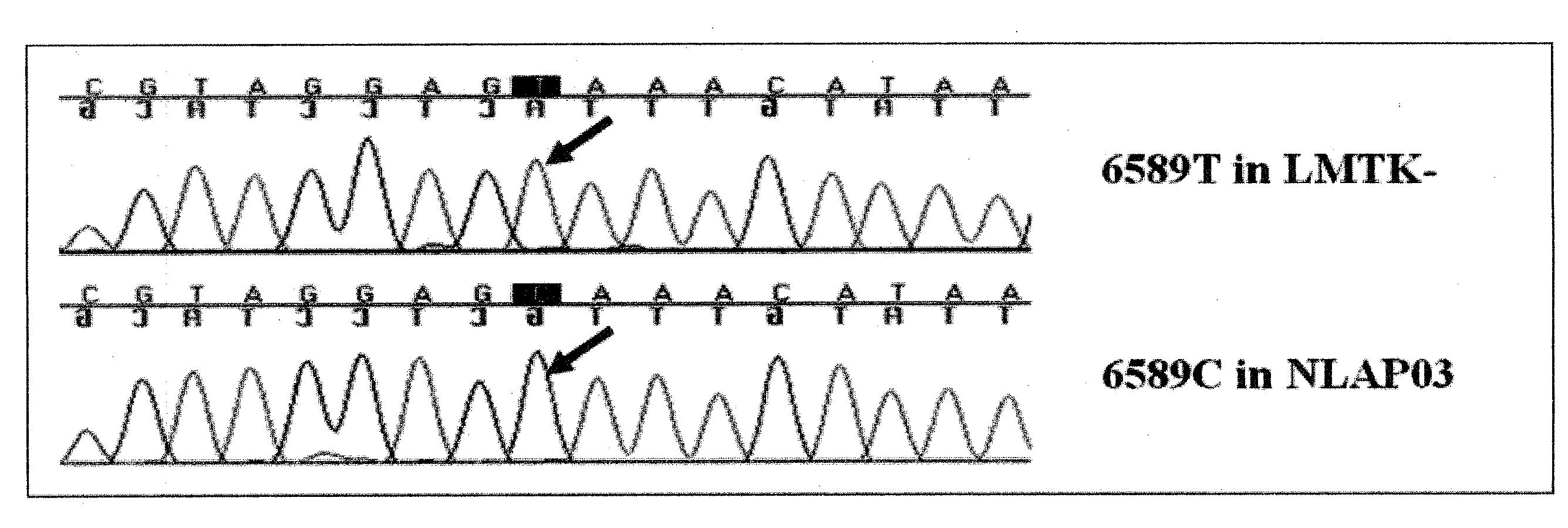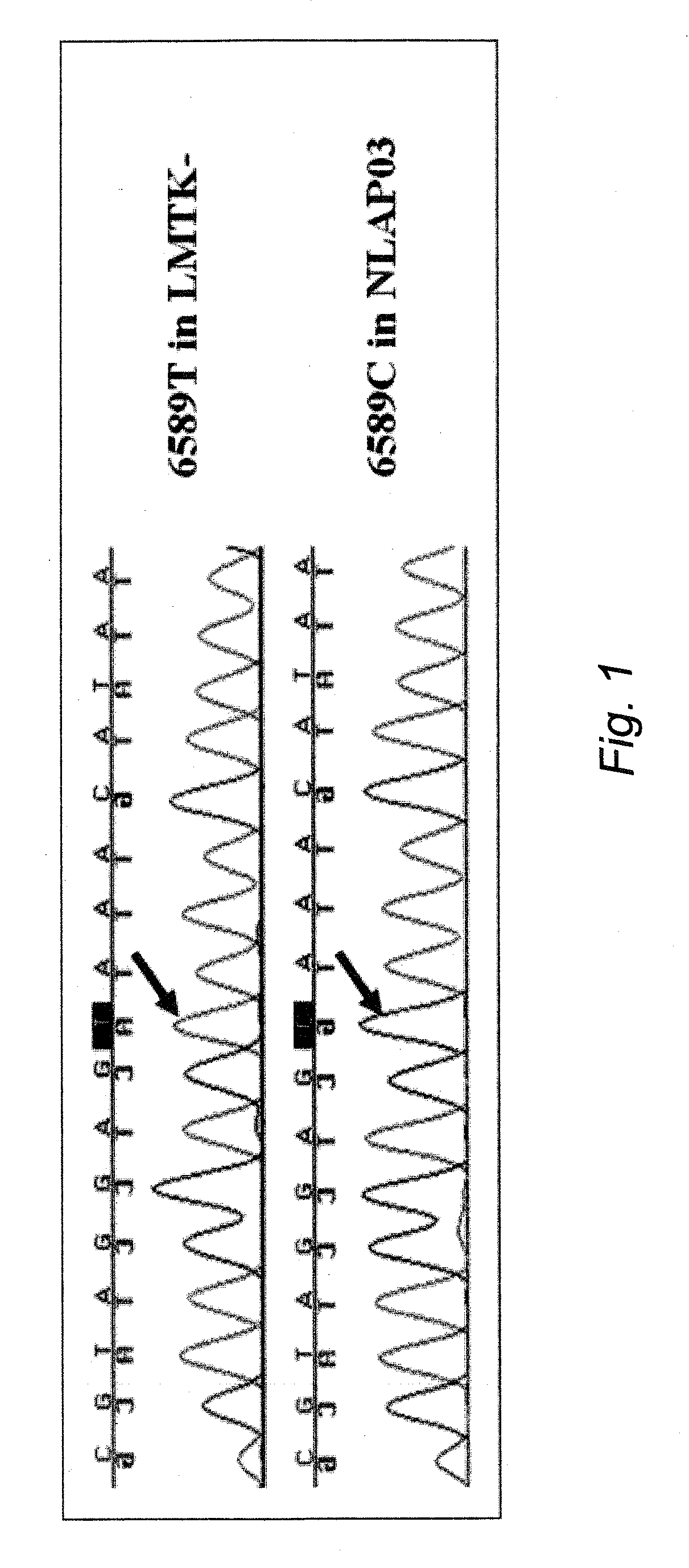Transgenic Mouse Models for Diseases Caused by mtDNA Mutations and Related Methods
a mouse model and mutation technology, applied in the field of genetics and biomedical methodology, can solve the problems of inherited predisposition to age-related disease or cancer, inability to adapt to the disease, so as to facilitate the development of the disease, increase the presence of apoptotic markers, and reduce the risk of death
- Summary
- Abstract
- Description
- Claims
- Application Information
AI Technical Summary
Benefits of technology
Problems solved by technology
Method used
Image
Examples
example 1
Homoplasmic COI T6589C Missense Mutant Mouse Model for Hypertrophic Cardiomyopathy
[0045]Hypertrophic cardiomyopathy in humans has been linked to mutations in 11 sarcomeric protein genes. Recessive null mutants in the human heart-muscle ANT isoform gene (ANT1) have also been reported to cause hypertrophic cardiomyopathy. Some hypertrophic cardiomyopathy patients have been identified with both sarcomeric protein and mtDNA mutations, and hypertrophic cardiomyopathy has been associated with mtDNA mutations alone. Thus, hypertrophic cardiomyopathy appears to be the common adaptive strategy for both reduced contractile force and reduced mitochondrial energy production.
[0046]Mouse models of hypertrophic cardiomyopathy have been heretofore been generated by introduction of certain of the human pathogenic mutations into the mouse sarcomeric protein genes. Hypertrophic cardiomyopathy has also been also heretofore been induced in Ant1 null mice.
[0047]In this example, Applicants describe the cr...
PUM
| Property | Measurement | Unit |
|---|---|---|
| Composition | aaaaa | aaaaa |
| Disorder | aaaaa | aaaaa |
Abstract
Description
Claims
Application Information
 Login to View More
Login to View More - R&D
- Intellectual Property
- Life Sciences
- Materials
- Tech Scout
- Unparalleled Data Quality
- Higher Quality Content
- 60% Fewer Hallucinations
Browse by: Latest US Patents, China's latest patents, Technical Efficacy Thesaurus, Application Domain, Technology Topic, Popular Technical Reports.
© 2025 PatSnap. All rights reserved.Legal|Privacy policy|Modern Slavery Act Transparency Statement|Sitemap|About US| Contact US: help@patsnap.com



